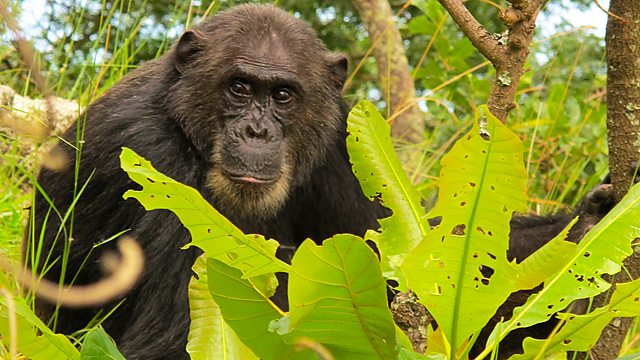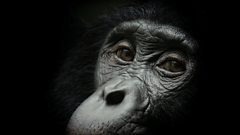Bonobos and Dragon Trees
Presented by Brett Westwood. Featuring a report from the Congo basin on the plight of bonobos and a look at dragon trees on the island of Madeira.
Bonobos are a great ape, related to chimpanzees, and are found in the forest of the Congo Basin of the Democratic Republic of Congo. The bonobos found within Salonga National Park are under threat from an increase in hunting for the bushmeat trade. While local villagers historically have hunted and eaten many animals found living in the forests, their impact on the bonobos is not significant. But with the bonobos being targetted by organised hunters from outside the Park, the meat is being sold at markets well beyond the forest and is being seen as a "luxury consumption" item, fetching a high price. Saving Species has spent time amongst the bonobos, the villagers and the biologists to find out what can be done to try and protect them from the increasing threats.
The dragon tree obtained its name due to the red resin it produces which is called "dragon's blood" and has been used over the centuries to dye clothes and stain wood - including violins. The tree is a native species of Madeira, the Canary Islands and Cape Verde. There are only one or two native wild dragon trees left on Madeira and Michael Scott finds out from local conservationists what is being done to increase the number of trees in the wild from original seed.
Also in the programme - news from around the world with our regular news reporter, Kelvin Boot, plus details on how you can contibute and use the Open University's iSpot facility.
Presenter: Brett Westwood
Producer: Sheena Duncan
Editor: Julian Hector.
Last on
More episodes
Clip
Bonobos

The (Pan paniscus) is a great ape, found only in the forests of the Democratic Republic of Congo.Ěý It is an endangered species and estimates of population range between 29,500 to 50,000.Ěý
Ěý
Groups of bonobos found in different areas of the dense forest have been extensively studied by scientists from around the world.Ěý One institute that has conducted many behavioural studies is the . The scientists have habituated a group of bonobos in the by almost daily visits over five years.Ěý Although the national parkĚýis protected, there are increasing threats from poaching and hunting for the commercial bushmeat trade.
Dragon Trees

The (Dracaena draco) is a perennial plant of slow growth, which can reach aboutĚý 20m in height, with an umbel shaped canopy. The tree is a native species of Madeira, the Canary Islands and Cape Verde.Ěý It grows extremely slowly, taking approximately 10 years to reach about 2-3 feet.
Ěý
InĚýMadeira it is rare to find it in its natural state; instead, it is very much used for ornamental purposes. In the past it was largely exploited for its reddish sap referred to as “dragon blood”, which was used as domestic medicine, as a dyeing product and as varnish.Ěý There are now very few native Dragon trees in Madeira.
Broadcasts
- Tue 22 Jan 2013 11:00±«Óătv Radio 4
- Thu 24 Jan 2013 21:00±«Óătv Radio 4
The Open University
Get closer to the species with The Open University


